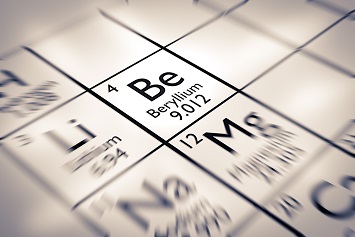On July 14, the Occupational Safety and Health Administration (OSHA) issued a final rule amending the general industry standard for beryllium (85 FR 42582). The final rule revises an “eleventh-hour” Obama administration rulemaking issued on January 9, 2017.
The final rule adds a definition and revises definitions for five other terms, as well as amends requirements for “methods of compliance,” “personal protective clothing and equipment,” “hygiene areas and practices,” “housekeeping,” “medical surveillance,” “hazard communication,” and “recordkeeping.”
The rulemaking leaves the permissible exposure limit (PEL) of 0.2 micrograms per cubic meter (µg/m3) and short-term exposure limit (STEL) of 2.0 µg/m3 in place.
The new rulemaking adds the term “beryllium sensitization,” defining it as:
Beryllium sensitization means a response in the immune system of a specific individual who has been exposed to beryllium. There are no associated physical or clinical symptoms and no illness or disability with beryllium sensitization alone, but the response that occurs through beryllium sensitization can enable the immune system to recognize and react to beryllium. While not every beryllium-sensitized person will develop chronic beryllium disease (CBD), beryllium sensitization is essential for development of CBD.
OSHA added the term to clarify other provisions of the standard, such as the definitions of “CBD” and “confirmed positive” and the standard’s medical surveillance and hazard communication requirements. CBD cannot occur in the absence of sensitization, according to the agency.
The rulemaking also amends definitions for “beryllium work area,” “CBD diagnostic center,” “CBDs,” “confirmed positive,” and “dermal contact with beryllium.”
The rulemaking revises the method of compliance requirements for written exposure control plans to clarify that procedures for minimizing cross-contamination within beryllium work areas may not “prevent” the transfer of beryllium but should minimize cross-contamination of beryllium between surfaces, equipment, clothing, materials, and articles in a beryllium work area. It also simplifies language in the requirement that employers should update written exposure control plans when informed that an employee shows signs or symptoms associated with “exposure to beryllium.”
The amendments also require that employers provide employees with personal protective clothing and equipment (PPE) where employee exposure exceeds, or can reasonably be expected to exceed, the time-weighted average (TWA) PEL or STEL or where there is a reasonable expectation of dermal contact with beryllium. It also clarified some provisions for the safe removal, storage, cleaning, and replacement of the PPE required by the standard.
The rulemaking clarifies when the employer must provide washing facilities and change rooms and the language concerning the cleaning of beryllium-contaminated PPE before an employee enters an eating or drinking area.
The new final rulemaking adds provisions for transferring material for reuse to resolve employers’ confusion with provisions of the 2017 rulemaking concerning disposal and recycling.

